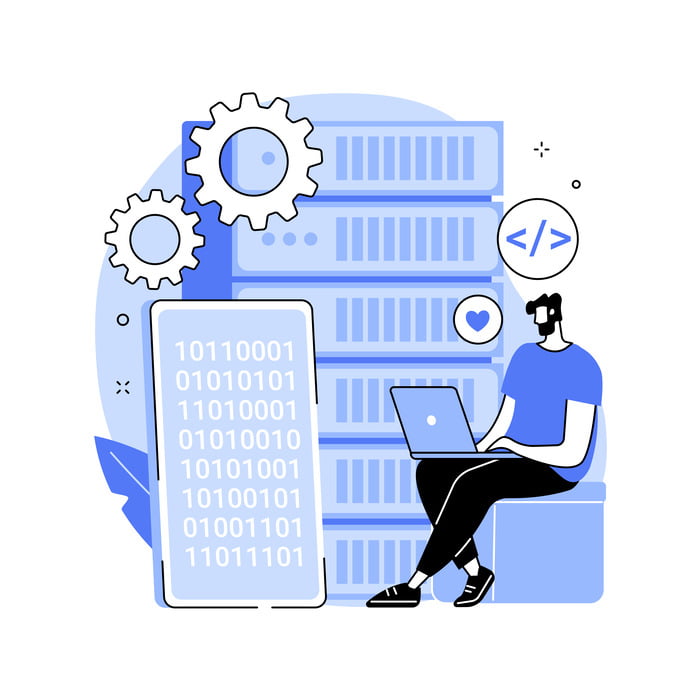Organizations heavily rely on their IT infrastructure to function efficiently. However, with increasing complexities and diverse IT services, managing and resolving incidents, problems, and requests can be a daunting task. To streamline these processes, IT Service Management (ITSM) ticketing systems have emerged as valuable tools for IT departments. In this comprehensive guide, we will delve into the world of ITSM ticketing systems, exploring their types, advantages, challenges, and the crucial role they play in IT service management.
Related blog: AI-Powered Ticket Automation: All You Need To Know
Types of ITSM Tickets
ITSM ticketing systems revolve around the concept of managing various types of tickets, each representing different issues or requests. These ticket types typically include:
Incident Tickets
Incident tickets are raised when a user faces an unexpected interruption or degradation of service. These issues could range from software crashes to hardware failures and require immediate resolution to restore normal service. With incident tickets, IT teams prioritize critical incidents to ensure minimal disruption to business operations.
Service Request Tickets
Service request tickets are non-urgent, pre-approved requests made by users to access specific IT services, such as access permissions, software installations, or hardware provisioning. ITSM ticketing systems enable organizations to automate service request workflows, reducing response time and enhancing user experience.
Problem Tickets
Problem tickets are created to investigate the root cause of recurring incidents. By addressing the underlying issues, IT teams can prevent future incidents and improve service reliability. Problem tickets also facilitate knowledge transfer among IT staff, enhancing problem-solving capabilities.
Change Request Tickets
Change request tickets are used to propose and implement changes in IT infrastructure, applications, or services. Effective change management ensures that alterations are implemented with minimal disruption. ITSM ticketing tools provide change management workflows, ensuring proper review and approval of change requests.
Knowledge Base Tickets
Knowledge base tickets focus on creating, updating, or accessing the organization’s knowledge base. They play a crucial role in knowledge sharing and empowering users with self-help resources. Through knowledge base tickets, organizations continuously improve their knowledge base, making it a valuable asset for users and support teams alike.
What are ITSM Ticketing Tools?

ITSM ticketing tools are specialized software solutions designed to facilitate the creation, management, and resolution of ITSM tickets. These tools are at the core of IT service desks, enabling IT teams to streamline workflows, improve collaboration, and enhance customer support. Modern ITSM ticketing tools are equipped with various features such as automation, intelligent routing, integration capabilities, reporting, and analytics.
ITSM ticketing tools act as centralized repositories, storing ticket details, communication threads, and resolutions, ensuring all information is readily accessible. Moreover, they often integrate with other IT systems like IT asset management, monitoring tools, and knowledge bases, fostering seamless data exchange.
Centralized repositories in ITSM ticketing tools provide a single source of truth for all ticket-related information. This centralized approach simplifies data retrieval, eliminates redundancies, and prevents information silos. With a complete historical record of each ticket, support teams can easily access past interactions and resolutions, avoiding duplication of effort and ensuring consistent service delivery. Furthermore, the centralized repository aids in compliance and auditing processes by maintaining a comprehensive log of all ticket-related activities.

Integration capabilities enhance the overall efficiency of ITSM ticketing systems. By integrating with various IT systems, ticketing tools can leverage the wealth of information available across the organization. For instance, integration with IT asset management systems enables ticketing tools to automatically retrieve device configurations and software details, allowing support teams to troubleshoot issues more effectively. Integration with monitoring tools provides real-time insights into system performance, enabling proactive problem resolution and reducing the impact of potential incidents.
Knowledge bases play a critical role in empowering IT support teams and end-users alike. By integrating ticketing systems with knowledge bases, support technicians can easily access relevant articles, guides, and solutions when addressing support tickets. This integration not only speeds up the resolution process but also encourages self-service among end-users, empowering them to find solutions to common issues independently. Consequently, the reduced reliance on support tickets frees up IT resources to focus on more complex and critical tasks.
Advantages of ITSM Ticketing Tools
Implementing an ITSM ticketing system yields several benefits that directly impact the efficiency of service management and overall business operations. Let’s explore these advantages in detail:
Enhanced Incident Resolution
ITSM ticketing tools streamline incident management workflows, allowing IT teams to categorize, prioritize, and assign tickets efficiently. This leads to faster incident resolution and reduced downtime, minimizing the impact on business operations. By capturing detailed incident information, these tools help IT teams diagnose and address issues promptly.
Efficient Service Request Management
Service request tickets are managed more effectively through ITSM tools, ensuring that all requests are tracked, approved, and fulfilled promptly. This improves user satisfaction and reduces service delivery bottlenecks. Automated approvals and workflows expedite service request fulfillment, freeing up IT staff for more critical tasks.
Improved Communication and Collaboration
With a centralized ticketing system, IT teams can communicate internally and with end-users, fostering collaboration and transparency. Ticket status updates, escalations, and resolutions are readily available to relevant stakeholders. Automated notifications keep users informed about ticket progress, boosting customer satisfaction.
Intelligent Ticket Routing
ITSM ticketing tools often incorporate intelligent ticket routing mechanisms based on predefined rules or categorization. This ensures that tickets are automatically directed to the most appropriate team or individual for swift resolution. The efficient routing minimizes ticket escalation and resolution delays, optimizing IT service delivery.
Effective Problem Management
ITSM ticketing systems facilitate effective problem management by tracking recurring incidents, identifying patterns, and initiating root cause analysis. This empowers IT teams to implement permanent solutions and prevent future incidents. As a result, the organization experiences reduced incident recurrence and increased service stability.
Change Management Efficiency
ITSM tools streamline change management processes, ensuring that proposed changes are thoroughly reviewed, approved, and implemented with minimal disruption to services. By providing a structured change management workflow, these tools minimize the risk of unauthorized changes and service disruptions.
Robust Reporting and Analytics

ITSM ticketing tools offer valuable insights through reporting and analytics features. IT teams can analyze ticket trends, identify areas for improvement, and make data-driven decisions to optimize service delivery. Detailed metrics help organizations measure IT performance, identify bottlenecks, and implement continuous improvements.
Challenges of ITSM Ticketing Tools
Despite their numerous advantages, ITSM ticketing systems also come with certain challenges that organizations must address:
Implementation complexity: Implementing an ITSM ticketing system requires careful planning, resource allocation, and staff training. Organizations may face challenges in integrating the tool with existing systems and workflows. Proper planning and communication are crucial to ensure a smooth implementation process.
Cost considerations: Acquiring and maintaining ITSM ticketing tools can be expensive, especially for smaller organizations. The costs involve licensing fees, infrastructure requirements, and ongoing support and updates. Organizations need to conduct a cost-benefit analysis to justify the investment and choose a tool that aligns with their budget and requirements.
User adoption: Ensuring widespread user adoption of the ITSM ticketing system can be challenging. Resistance to change and unfamiliarity with the new tool may lead to underutilization or inefficient use. Proper training and support are essential to encourage users to embrace the new system.
Data security and privacy: Since ITSM ticketing systems store sensitive information, ensuring data security and privacy is paramount. Organizations need robust security measures to protect data from unauthorized access or breaches. Compliance with data protection regulations must be a top priority.
Over-reliance on automation: While automation can enhance efficiency, an over-reliance on automation may lead to reduced personal touch and customer satisfaction. Balancing automation with human intervention is essential. IT teams must find the right balance to provide personalized and empathetic support when required.
Related blog: Understanding the Different Features of Ticket Management Software
Conclusion
ITSM ticketing systems play a critical role in modern IT service management, streamlining incident resolution, service request management, problem analysis, and change management processes. These tools bring together the entire support ecosystem, improving communication, collaboration, and transparency between IT teams and end-users. By leveraging the advantages of ITSM ticketing tools, organizations can enhance their overall service efficiency, reduce downtime, and deliver exceptional user experiences.
However, it’s important to be aware of the challenges associated with these tools and implement strategies to address them effectively. With careful planning, proper training, and a focus on user adoption, organizations can maximize the benefits of ITSM ticketing systems, ultimately leading to more effective and efficient IT service management. Investing in the right ITSM ticketing tool is a significant step toward achieving seamless service delivery, improved customer satisfaction, and enhanced IT support capabilities


















